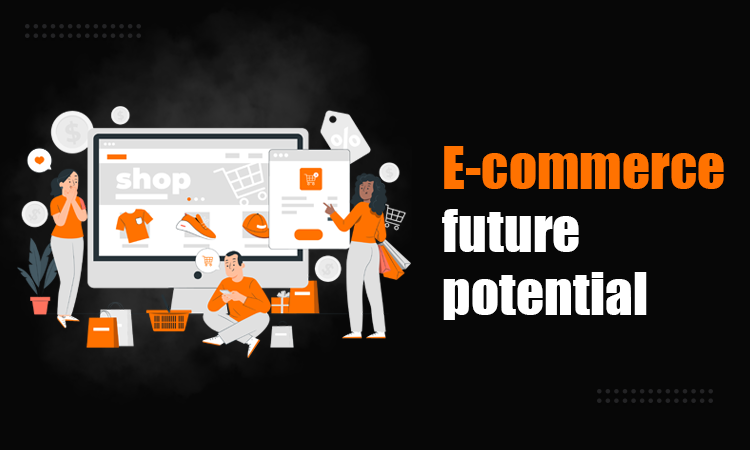E-commerce, often known as electronic commerce, is the practice of conducting business utilizing digital platforms via the internet. These platforms may be divided into two types: providers and platforms. eCommerce platforms may be defined as any sort of online business model that facilitates sales and transactions over the internet. It is expected that by 2022, the internet will be home to more than 2 billion of the world’s digital buyers.
Transformation of E-commerce
The introduction of the internet, whose usage was first restricted to the government and the armed services, provided the impetus for all that followed. In 1989, the general public was granted access to the internet. Following its introduction in 1991, the World Wide Web swiftly became a global sensation due to the countless possibilities and opportunities it provided. It didn’t take long for the internet to become a key source of information, entertainment, and communication. Several firms have looked into the internet’s practically unlimited applications and possibilities. Companies that are now industry leaders, such as eBay, Amazon, and Netflix, were among the first to exploit the internet to develop services that are still extensively used today.
There has been significant debate over who was the true pioneer of internet shopping. For example, it has been alleged that Phil Bradenger was the first individual to engage in eCommerce in 1994 when he used his computer and credit card to purchase and shipped to him a “ten summoners” record. This would make him the first eCommerce pioneer. On the other hand, many people believe that Michael Aldrich, the person responsible for establishing teleshopping, was the first to build eCommerce. Some say that the company “Boston Computer Exchange” was the first to sell computers online. Others claim that the website “Bookstacks unlimited,” founded in 1992, was the first online bookshop and, as a result, the first eCommerce site.
Types of E-commerce
According to the parties involved in the transaction, e-commerce may be divided into three fundamental groups. The online commerce or eCommerce transaction between two parties, where one of the parties is a business or a client, can be divided into four major categories, as suggested by the names of the types:
B2B stands for “business to business,” and it refers to any transaction that occurs between two separate firms. This sort of business includes marketing firms, digital marketing consultancy organizations, businesses that collect data and deliver insights, and so on. Some of the firms we deal with include Auto Global Trade, Quill, Granger, eWorld Trade, Alibaba Group, and Walmart.
B2C stands for “business to consumer,” and it refers to shops and companies that sell goods and services directly to end users. Amazon, Netflix, Flipkart, Google, and Shopify are some examples of online retailers.C2C stands for “consumer to consumer,” and it refers to the transaction of goods and services from one individual consumer to another.
Consumer to business, or C2B, refers to the use of platforms that allow people to advertise their services to other businesses, who can then browse, contact, and hire them as well as submit references and testimonials. C2B workers are people who are hired to provide services to businesses.
Ecommerce’s Components
E-commerce began as a playground for major companies, but it has now grown into a commodity that anybody, including start-ups, small businesses, entrepreneurs, brands, bloggers, freelancers, and non-governmental organizations, may readily access (NGOs). eCommerce is now available on social media sites such as Instagram and Facebook. Some of the elements that comprise eCommerce are as follows:
Accessibility: It is simple and quick to use. It also has the potential to eliminate the additional fees associated with a middleman by directly connecting the buyer and the supplier.
Globally accessible: The internet allows business to take place between any two parties on the earth, regardless of physical location. More connections mean that there will be more markets to cover, which will result in greater investors participating, which will result in more business.
Low transaction fees: The ease with which commerce may be conducted online minimizes the expenses involved with running traditional companies. Furthermore, it is the most practical technique for conducting business.
Summary
An explosion of e-commerce enterprises has occurred in recent years, notably during and following the global pandemic. According to the available statistics, these organizations have an incredibly bright and lucrative future ahead of them. Understanding the scope of e-commerce is critical whether you operate an online business or are in charge of its promotion. These are the trends that are present and will continue to exist in this industry.
This can help you recognize and select acceptable e-commerce options, as well as put predicted trends into action before they become generally embraced. This article discussed five current trends that are not going away but will instead spread and become more important in the next years.
The eCommerce industry is constantly growing, and it has recently evolved into one of the newest trends, consisting of social networking platforms that have direct shopping options and separate sites for exploring items that are of interest.





